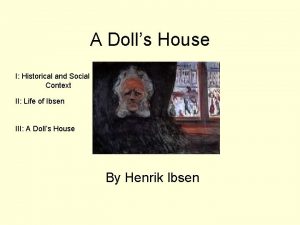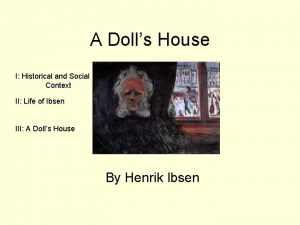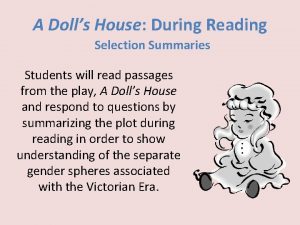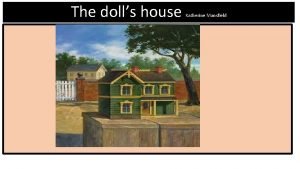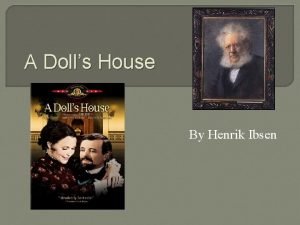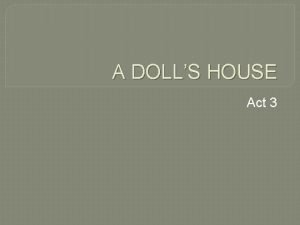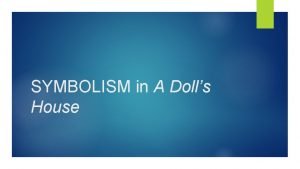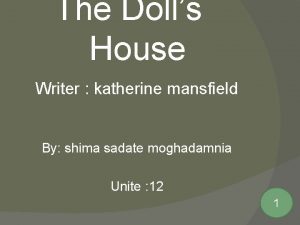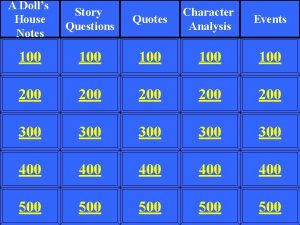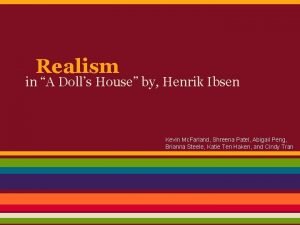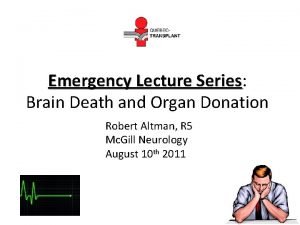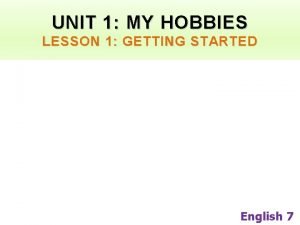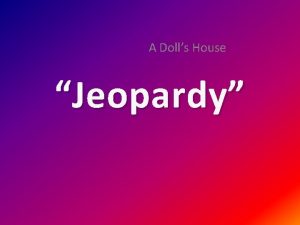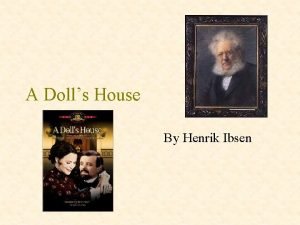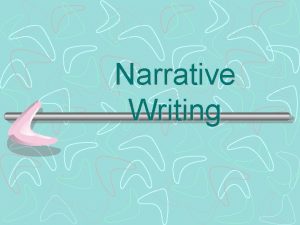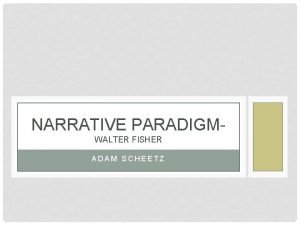Narrative Style in The Dolls House What is












- Slides: 12

Narrative Style in The Doll’s House

What is a narrator? • The narrator is the person telling the story. • They could be involved in the story as a character (first person) • Or they could be an outsider watching the events who is never identified as an actual person (third person)

Who or what is the narrator in The Doll’s House? • Look through the text. What narrative perspective does it use? • Hint – if the narrator refers to themselves as ‘I’, ‘myself’, ‘me’ and so on, it is first person. If not, it is third person.

It is third person… • Third person doesn’t always mean the narrator is objective. Sometimes they report events as they happen with no information about characters’ feelings. • Other times they can convey the feelings of some or all characters, for example, “Stacey felt sad and betrayed. ” This style of narration is called Eye of God, because the narrator knows what the characters think and feel.

BUT… • Mansfield’s style of narration is different in that it conveys the thoughts and feelings of the characters in the story, but it doesn’t do it using the narrator’s voice. • The feelings and thoughts of the characters in The Dolls House are conveyed as if the characters themselves are speaking – in their own words.

Free Indirect Speech (Sometimes called Free Indirect Discourse) • This is a style of third-person narration which uses some of the characteristics of thirdperson (the ‘telling’ of the story) along with the essence of first-person direct speech (the words the character would use to talk)

• It is a manner of presenting the thoughts or feelings of a fictional character as if from that character’s point of view by combining grammatical and other features of the character’s ‘direct speech’ with features of the narrator’s ‘indirect report’ • What distinguishes free indirect speech from normal speech is the lack of an introductory expression such as "He said" or "he thought".

• Quoted or direct speech: He laid down his bundle and thought of his misfortune. "And just what pleasure have I found, since I came into this world? " he asked. • Normal indirect speech: He laid down his bundle and thought of his misfortune. He asked himself what pleasure he had found since he came into the world. • Free indirect speech: He laid down his bundle and thought of his misfortune. And just what pleasure had he found, since he came into this world?

That is the way for a house to open! Why don’t all houses open like that? • Basically what this means is that the narrator telling the story presents the thoughts and feelings of the characters, by using their own style of speaking in the narration. • An example of this is “But perfect, perfect little house. Who could possibly mind the smell? It was part of the joy…”

• We can tell when this is happening, because the narrator is not supposed to offer judgements or opinions, but just to report the events. • Lines like “perfect house” and “this was awful enough” are judgements which tell us that they are thoughts/opinions of someone.

Your task: • Find three more examples from the text, other than the ones already used, that are judgements written by the narrator (not being spoken by the characters) • Whose thoughts or opinions do they represent? • Whose thoughts or opinions are predominantly represented in the text?

Now consider… • How does this use of Free Indirect Speech help us, the reader, to understand the main ideas or messages in the story? Write a paragraph explaining this.
 Historical context of a doll's house
Historical context of a doll's house A doll's house short summary
A doll's house short summary A doll's house cultural context
A doll's house cultural context What does the doll's house symbolize in the selection
What does the doll's house symbolize in the selection Summary the doll's house katherine mansfield
Summary the doll's house katherine mansfield The dolls house by katherine mansfield moral lesson
The dolls house by katherine mansfield moral lesson Doll house act 2 summary
Doll house act 2 summary Symbols in the doll's house
Symbols in the doll's house What does kezia do that makes aunt beryl angry
What does kezia do that makes aunt beryl angry What is the sweet that nora is forbidden to eat
What is the sweet that nora is forbidden to eat Henrik ibsen realism
Henrik ibsen realism Horizontal gaze center
Horizontal gaze center Unit 1 getting started
Unit 1 getting started
